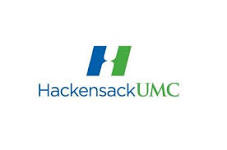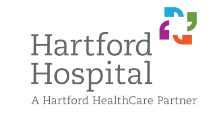The Lung Screening, Tobacco and Health Project
| Status: | Recruiting |
|---|---|
| Conditions: | Lung Cancer, Smoking Cessation |
| Therapuetic Areas: | Oncology, Pulmonary / Respiratory Diseases |
| Healthy: | No |
| Age Range: | 50 - 80 |
| Updated: | 8/4/2018 |
| Start Date: | May 3, 2017 |
| End Date: | June 2021 |
| Contact: | Kathryn L. Taylor, PhD |
| Email: | taylorkl@georgetown.edu |
| Phone: | 202-687-0649 |
Integrating Evidence-Based Smoking Cessation Interventions Into Lung Cancer Screening Programs: A Randomized Trial
The purpose of this study is to compare intensive telephone counseling (ITC) plus the
nicotine patch vs. standard telephone counseling plus the nicotine patch (Usual Care; UC)
among current smokers undergoing lung cancer screening. Smoking-related outcomes will be
examined at three, six and twelve months post-randomization.
nicotine patch vs. standard telephone counseling plus the nicotine patch (Usual Care; UC)
among current smokers undergoing lung cancer screening. Smoking-related outcomes will be
examined at three, six and twelve months post-randomization.
The investigators have built on the evidence-base of telephone counseling for smoking
cessation. This pragmatic approach is designed at the intersection of scalability and
intensity, for future implementation within the national tobacco quitline. In collaboration
with five geographically and ethnically diverse lung cancer screening programs, the
investigators will accrue smokers who have registered for screening,and are at all levels of
readiness to quit. Prior to the screening day, the investigators will conduct the baseline
(T0) phone interview. Following participants' receipt of their screening result (one week
post-screening), the investigators will complete the T1 phone interview, provide brief advice
to quit and conduct randomization. Participants will be randomized into one of two groups:
ITC, in which participants are provided up to 8 counseling sessions lasting approximately 20
minutes each and access to 8-weeks of free nicotine patches. ITC will include a discussion of
screening results throughout counseling sessions. The UC arm will include up to 3 counseling
sessions lasting approximately 20 minutes each and access to 2-weeks of free nicotine
patches. UC will not include a discussion of screening results throughout counseling
sessions. All sessions will be conducted by a Tobacco Treatment Specialist (English or
Spanish) and the investigators will assess intervention fidelity. In both groups, the
investigators will engage referring physicians by notifying them of their patients' study
enrollment and of their patients' smoking status at the 6-month follow-up. The 3-month (T2),
6-month (T3), and 12-month (T4) assessments will assess readiness to quit, quit attempts,
7-day and 30-day abstinence verified by Nicalert or carbon monoxide testing, and intervention
process variables. Furthermore, two important aspects of this approach include a
cost-effectiveness analysis and use of the Cancer Intervention and Surveillance Modeling
Network (CISNET) to evaluate the cost of the interventions relative to their impact on short-
and long-term smoking-related outcomes.
The aims are:
1. To compare ITC vs. UC standard telephone counseling. H1.1. At 3-, 6-, and 12- months,
the ITC arm will have significantly improved biochemically verified 7-day and 30-day
abstinence, compared to UC. H1.2. Mediators, including teachable moment factors (e.g.,
perceived risk based on screening results) and process measures (TC and nicotine patch
adherence, primary care appointment) will positively affect cessation outcomes at 3-, 6-
and 12-months. H.1.3. Moderators include screening result, readiness to quit, and
nicotine dependence.
2. To evaluate reach (% of current smokers enrolled) and engagement (% who receive the
interventions), both overall and among subgroups (gender, age, nicotine dependence,
site). The investigators will assess intervention fidelity and feasibility for
implementation, from both community-based and academically-based screening centers.
3. To conduct an economic analysis to test the hypothesis that while costlier, ITC will be
more effective and have greater reach than UC in the lung screening setting, making it
more cost-effective in terms of costs per 3-, 6- and 12-month cessation rates and quit
attempts. The investigators will use these results as inputs to the CISNET model to
project the long-term impact of the interventions on costs per life year saved and
quality-adjusted life years saved, lung cancer deaths averted, lung cancer mortality
reduction, and overall population mortality.
This study's strengths include the assessment of effective cessation methods designed for
widespread implementation, novel components based on unique features of screening,
cost-effectiveness analyses, and leveraging the University of Michigan CISNET model to
project the population impact of implementing an effective cessation intervention in lung
screening programs. The overall goal is to have a substantial public health impact by
providing critical data to address scalability efforts by screening centers, insurers, and
policy-makers.
cessation. This pragmatic approach is designed at the intersection of scalability and
intensity, for future implementation within the national tobacco quitline. In collaboration
with five geographically and ethnically diverse lung cancer screening programs, the
investigators will accrue smokers who have registered for screening,and are at all levels of
readiness to quit. Prior to the screening day, the investigators will conduct the baseline
(T0) phone interview. Following participants' receipt of their screening result (one week
post-screening), the investigators will complete the T1 phone interview, provide brief advice
to quit and conduct randomization. Participants will be randomized into one of two groups:
ITC, in which participants are provided up to 8 counseling sessions lasting approximately 20
minutes each and access to 8-weeks of free nicotine patches. ITC will include a discussion of
screening results throughout counseling sessions. The UC arm will include up to 3 counseling
sessions lasting approximately 20 minutes each and access to 2-weeks of free nicotine
patches. UC will not include a discussion of screening results throughout counseling
sessions. All sessions will be conducted by a Tobacco Treatment Specialist (English or
Spanish) and the investigators will assess intervention fidelity. In both groups, the
investigators will engage referring physicians by notifying them of their patients' study
enrollment and of their patients' smoking status at the 6-month follow-up. The 3-month (T2),
6-month (T3), and 12-month (T4) assessments will assess readiness to quit, quit attempts,
7-day and 30-day abstinence verified by Nicalert or carbon monoxide testing, and intervention
process variables. Furthermore, two important aspects of this approach include a
cost-effectiveness analysis and use of the Cancer Intervention and Surveillance Modeling
Network (CISNET) to evaluate the cost of the interventions relative to their impact on short-
and long-term smoking-related outcomes.
The aims are:
1. To compare ITC vs. UC standard telephone counseling. H1.1. At 3-, 6-, and 12- months,
the ITC arm will have significantly improved biochemically verified 7-day and 30-day
abstinence, compared to UC. H1.2. Mediators, including teachable moment factors (e.g.,
perceived risk based on screening results) and process measures (TC and nicotine patch
adherence, primary care appointment) will positively affect cessation outcomes at 3-, 6-
and 12-months. H.1.3. Moderators include screening result, readiness to quit, and
nicotine dependence.
2. To evaluate reach (% of current smokers enrolled) and engagement (% who receive the
interventions), both overall and among subgroups (gender, age, nicotine dependence,
site). The investigators will assess intervention fidelity and feasibility for
implementation, from both community-based and academically-based screening centers.
3. To conduct an economic analysis to test the hypothesis that while costlier, ITC will be
more effective and have greater reach than UC in the lung screening setting, making it
more cost-effective in terms of costs per 3-, 6- and 12-month cessation rates and quit
attempts. The investigators will use these results as inputs to the CISNET model to
project the long-term impact of the interventions on costs per life year saved and
quality-adjusted life years saved, lung cancer deaths averted, lung cancer mortality
reduction, and overall population mortality.
This study's strengths include the assessment of effective cessation methods designed for
widespread implementation, novel components based on unique features of screening,
cost-effectiveness analyses, and leveraging the University of Michigan CISNET model to
project the population impact of implementing an effective cessation intervention in lung
screening programs. The overall goal is to have a substantial public health impact by
providing critical data to address scalability efforts by screening centers, insurers, and
policy-makers.
Inclusion Criteria:
- Have a >20-pack year smoking history (i.e., smoked at least a pack a day for 20 years)
- Current smokers, regardless of number smoked per day
- Can be smoking cigarettes, cigarillos, or little cigars
- English- or Spanish-speaking
- Ability to provide meaningful consent
- Have registered for CT lung cancer screening at one of our five participating lung
screening sites (for enrollment) and have completed CT lung cancer screening (for
subsequent follow-ups).
- Current smokers are eligible to participate regardless of prior lung cancer screening
or prior cessation treatment. Smokers not yet ready to quit will be encouraged to
participate.
Exclusion Criteria:
- Previously diagnosed with lung cancer
- Diagnosed with lung cancer during the study (although still eligible to receive free
telephone counseling and nicotine replacement)
- At the T1 assessment when randomization occurs, individuals who have been quit for 8+
days will not be randomized. We will request that they participate in follow-up
assessments of smoking status at 3-, 6- and 12-months.
We found this trial at
7
sites
30 Prospect Ave
Hackensack, New Jersey 07601
Hackensack, New Jersey 07601
(201) 996-2000

Phone: 551-996-3384
Hackensack University Medical Center Hackensack University Medical Center, part of the Hackensack University Health Network,...
Click here to add this to my saved trials
Click here to add this to my saved trials
The Hartford Hospital Hartford Hospital is the major teaching hospital affiliated with the University of...
Click here to add this to my saved trials
Click here to add this to my saved trials
Click here to add this to my saved trials
Click here to add this to my saved trials
3800 Reservoir Rd NW
Washington, District of Columbia 20007
Washington, District of Columbia 20007
(202) 687-7695

Phone: 202-687-0649
Georgetown University Medical Center Georgetown University Medical Center is committed to excellence in research, education...
Click here to add this to my saved trials
